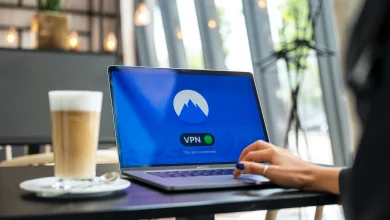Public Network Security
In the fast-paced digital era, where our lives are intricately woven into the fabric of the internet, ensuring public network security has become paramount. This article explores the depths of public network security, from understanding common threats to implementing effective strategies and embracing emerging technologies. Let’s embark on a journey to comprehend the intricacies of safeguarding our digital realm.
I. Introduction
A. Definition of Public Network Security
Public network security refers to the measures and protocols implemented to protect the integrity, confidentiality, and availability of information transmitted over public networks. It encompasses a broad spectrum of strategies aimed at thwarting malicious activities that could compromise the security of digital communications.
B. Significance in the Digital Age
In an age where data is a currency and connectivity is ubiquitous, the significance of public network security cannot be overstated. The seamless flow of information over the internet brings with it a myriad of threats, making robust security measures imperative.
II. Common Threats in Public Network Security
A. Malware Attacks
Malicious software, or malware, poses a constant threat to public network security. From viruses to ransomware, these attacks can cripple systems and compromise sensitive data.
B. Phishing and Social Engineering
Cleverly disguised emails and deceptive online tactics can trick individuals into revealing confidential information, highlighting the need for awareness and education.
C. DDoS Attacks
Distributed Denial of Service (DDoS) attacks overwhelm a system with traffic, causing disruptions. Understanding and mitigating these attacks are crucial for maintaining network integrity.
D. Unauthorised Access
Illicit access to networks can result in data breaches and the unauthorised use of resources. Implementing stringent access controls is essential to preventing such incidents.
III. Importance of Public Network Security
A. Protection of Sensitive Information
Public network security plays a pivotal role in safeguarding sensitive information, including personal details, financial records, and proprietary business data.
B. Safeguarding Personal Privacy
Individuals entrust vast amounts of personal information to digital platforms. Robust security measures are vital to protecting privacy in an interconnected world.
C. Ensuring Business Continuity
For businesses, disruptions in network security can lead to downtime, financial losses, and damage to reputation. Implementing security measures is an investment in continuity.
D. Maintaining Reputation and Trust
Customers and clients expect businesses to handle their data responsibly. A breach not only jeopardises data but also erodes trust. Reputation management is integral to public network security.
IV. Strategies for Enhancing Public Network Security
A. Strong Password Policies
Implementing strong password policies, including regular updates and multi-factor authentication, adds an extra layer of defence against unauthorised access.
B. Encryption Techniques
Encrypting data during transmission and storage ensures that even if intercepted, it remains unreadable to unauthorised entities.
C. Regular Software Updates
Keeping software up-to-date is critical, as updates often include patches for vulnerabilities exploited by cybercriminals.
D. Network Monitoring Solutions
Continuous monitoring of network activity allows for the swift detection of anomalies, enabling proactive responses to potential threats.
V. Role of Individuals in Public Network Security
A. Cybersecurity Awareness
Educating individuals about cybersecurity threats and best practices empowers them to recognise and respond to potential dangers.
B. Responsible Online Behaviour
Promoting responsible online behaviour, such as avoiding suspicious links and refraining from sharing sensitive information, contributes to a safer digital environment.
C. Reporting Suspicious Activity
Creating channels for reporting suspicious activity ensures that potential threats are addressed promptly, preventing widespread damage.
D. Using Secure Wi-Fi Connections
Secure Wi-Fi connections with strong encryption are essential for protecting data during transmission over wireless networks.
VI. Impact of Public Network Security on Businesses
A. Financial Consequences
The financial repercussions of a security breach can be staggering, including legal fees, compensation to affected parties, and the cost of implementing enhanced security measures.
B. Legal Implications
In many jurisdictions, businesses are legally obligated to protect customer data. Failing to do so can result in severe legal consequences.
C. Customer Trust and Loyalty
Customer trust is hard-earned but easily lost. Businesses with a strong commitment to security enjoy greater customer loyalty and positive brand perception.
D. Competitive Advantage
Public network security is not just a defensive strategy; it can also be a competitive advantage. Businesses that demonstrate robust security practices gain a competitive edge in the market.
VII. Emerging Technologies in Public Network Security
A. Artificial Intelligence and Machine Learning
AI and machine learning algorithms play a crucial role in identifying patterns and anomalies, enhancing the ability to detect and respond to threats.
B. Blockchain for Enhanced Security
The decentralised nature of blockchain technology provides a secure and tamper-resistant framework for data transactions.
C. Biometric Authentication
Biometric measures, such as fingerprint or facial recognition, offer an extra layer of security beyond traditional passwords.
D. Quantum Computing Challenges
The advent of quantum computing poses both opportunities and challenges for public network security, requiring innovative solutions to protect against quantum threats.
VIII. Future Trends in Public Network Security
A. Integration of IoT Devices
As the Internet of Things (IoT) expands, securing the multitude of connected devices becomes crucial to preventing vulnerabilities in network security.
B. 5G Network Security Concerns
The rollout of 5G technology introduces new challenges, including the need for enhanced encryption and protection against sophisticated cyber threats.
C. Cybersecurity Regulations and Compliance
Governments worldwide are tightening regulations to ensure organisations adhere to cybersecurity standards, fostering a more secure digital environment.
D. Rise of Cybersecurity Insurance
As cyber threats evolve, the demand for cybersecurity insurance is on the rise, providing businesses with financial protection against potential losses.
IX. Challenges in Implementing Public Network Security Measures
A. Balancing Security and User Convenience
Striking the right balance between robust security measures and user-friendly experiences remains a challenge, as overly complex security protocols can hinder user adoption.
B. Evolving Nature of Cyber Threats
The ever-evolving tactics of cybercriminals necessitate continuous adaptation of security measures to stay ahead of emerging threats.
C. Limited Resources for Small Businesses
Smaller businesses often face resource constraints when implementing robust network security measures, making them more susceptible to cyber attacks.
D. Global Collaboration for Cybersecurity
The interconnected nature of the internet requires global collaboration to combat cyber threats effectively. Sharing intelligence and best practices is crucial.
X. Case Studies: Successful Public Network Security Implementations
A. Government Initiatives
Government-led initiatives, such as cybersecurity task forces, have successfully strengthened national network security infrastructures.
B. Corporate Best Practices
Leading corporations that prioritise cybersecurity have successfully fended off attacks and maintained the trust of their stakeholders.
C. Community-driven Security Measures
Communities coming together to share information and implement localised security measures showcase the effectiveness of grassroots efforts.
D. Educational Institutions’ Strategies
Educational institutions play a vital role in shaping the future of cybersecurity by instilling best practices and fostering innovation.
XI. Tips for Individuals to Enhance Public Network Security
A. Two-Factor Authentication
Enabling two-factor authentication adds an extra layer of security to personal accounts, reducing the risk of unauthorised access.
B. Virtual Private Networks (VPNs)
Using VPNs when accessing public Wi-Fi networks enhances privacy and protects against potential threats.
C. Regular Security Audits
Conducting regular security audits on personal devices ensures that vulnerabilities are identified and addressed promptly.
D. Responsible Social Media Usage
Being mindful of the information shared on social media helps prevent the misuse of personal data for malicious purposes.
XII. The Role of Public Network Security in a Post-Pandemic World
A. Remote Work Challenges
The shift to remote work during the pandemic underscored the importance of secure network connections to maintain productivity and protect sensitive data.
B. Increased cyberattacks during the Pandemic
The pandemic saw a surge in cyber attacks, targeting vulnerabilities exposed by the rapid adoption of digital communication tools.
C. Building Resilient Network Security Infrastructures
Post-pandemic, businesses are investing in resilient network security infrastructures to adapt to the evolving digital landscape.
D. Lessons Learned
The pandemic served as a catalyst for reassessing and reinforcing public network security, with valuable lessons shaping future strategies.
XIII. Conclusion
A. Recap of the Importance of Public Network Security
In a world where our digital footprints define us, public network security emerges as the guardian of our online existence. Safeguarding information, ensuring privacy, and fostering a secure digital ecosystem are imperative for individuals and businesses alike.
B. Call to Action for Individuals and Businesses
As we navigate the ever-changing landscape of digital connectivity, the onus is on each individual and business to prioritise public network security. Embrace the evolving technologies, stay informed, and actively contribute to creating a safer online environment.
FAQs
- How can I protect my personal information online?
- Implement strong, unique passwords and enable two-factor authentication. Avoid sharing sensitive information on insecure platforms.
- What role does artificial intelligence play in public network security?
- AI enhances threat detection by analysing patterns and anomalies, strengthening the overall security infrastructure.
- Why is it essential for small businesses to focus on network security?
- Small businesses are often targeted due to perceived vulnerabilities. Prioritising network security is crucial to preventing financial and reputational damage.
- How can individuals contribute to global cybersecurity efforts?
- Reporting suspicious activities, staying informed about cybersecurity best practices, and adopting secure online behaviours contribute to global cybersecurity.
- Is cybersecurity insurance necessary for businesses?
- Cybersecurity insurance provides financial protection against potential losses due to cyberattacks, making it a valuable investment for businesses.





